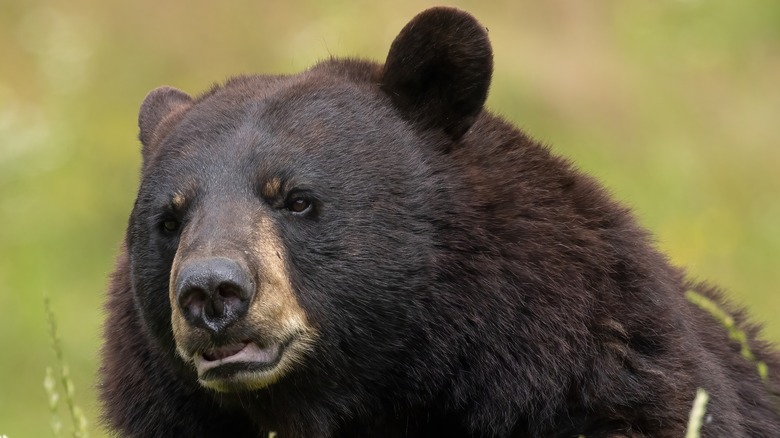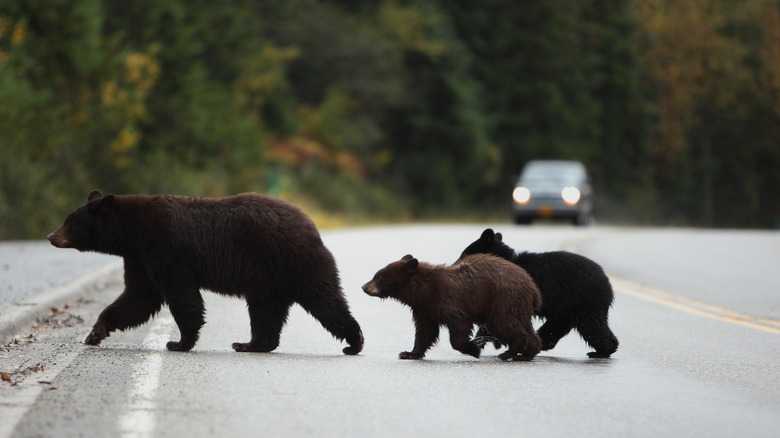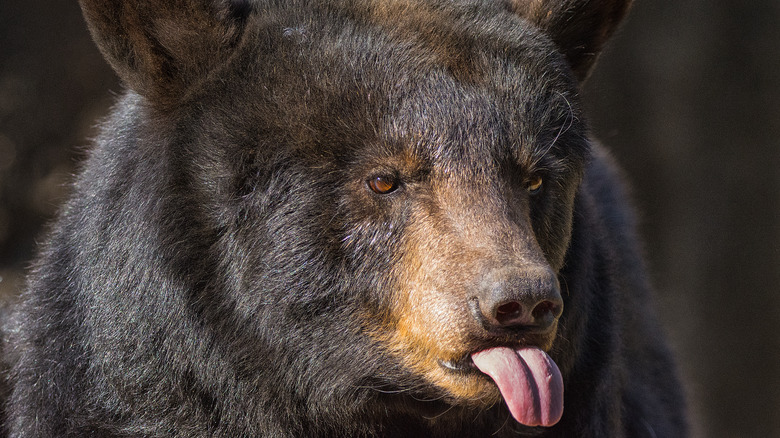Why The Bear In Cocaine Bear Looks Familiar
In a premise so strange it could only be based on a true story, the 2023 feature film "Cocaine Bear" is inspired by real events, when in 1985, a shipment of cocaine was discarded from an airplane by smugglers over the Chattahoochee-Oconee National Forest in Georgia. The duffel bag filled with cocaine was later consumed by a passing bear. From there, though, the movie adaptation of the real incident takes many liberties with the facts.
After feasting on the cocaine, for example, the actual cocaine bear was sadly found dead from what amounted to an overdose. It never went on a stimulant-fueled murderous rampage, as the movie version depicts. One way the film is accurate, though, is in the species of the bear, the most common in all of North America. The disposition of these real-life animals, though, couldn't be more removed from the aggressive CGI bear starring in the hit feature film — unless, of course, one really did survive, at least for a while, a massive cocaine intake, as the "Cocaine Bear" movie story goes (via Bear Biology).
The real cocaine bear was an American black bear
"Cocaine Bear" audiences who found themselves thinking the bear in the movie looked familiar are right: The actual bear in the true story was an American black bear, the most common bear species in all of North America, as is rendered via CGI in the feature film. Medium-sized, American black bears measure up to six feet long and can weigh more than 600 pounds. Though no longer populating many areas where they once were abundant, the American black bear can still be found in forested areas in most states and several other points throughout North America.
The real habitat of the American black bear does include the Chattahoochee-Oconee National Forest in Georgia, where the "Cocaine Bear" movie is set and where the whole strange situation transpired in real life, according to the U.S. Forest Service. Black bears are called black because, well, they're most often black, but they can sometimes have brownish-tinted coats leading to some confusion with the aptly-named brown bear, a different bear species. Omnivorous, black bears eat almost anything they come across, including berries and roots, among other types of vegetation. They are also known to hunt young deer and moose, and, where available, spawning salmon.
American black bears are actually pretty mellow
Unlike the bear in the "Cocaine Bear" feature film, black bears — and most other bears for that matter — are rarely aggressive, and most are often shy and reclusive. That is unless they're especially hungry, if a mother is protecting her young, or if one happened to eat a large quantity of cocaine that proved much too large for, as it turns out an actual bear. Black bears, in particular, are somewhat friendly as opposed to other species like the Grizzly bear and are known to stray near human habitation. More often than not, bears steer clear of people, and bear-human attacks are quite rare.
Black bears are also highly curious about new scents or sounds, which might explain why the actual cocaine bear chose to eat the cocaine it came across on that fateful day in the forest, as Bear Smart notes. Clearly, the "Cocaine Bear" movie diverges from bear biology and actual history but gets other things right in the CGI rendering of the bear's species. According to "Cocaine Bear" writer Jimmy Warden, speaking with Variety, the unfortunate bear in reality and in his movie is not the bad guy of the story. "What happened is a product of circumstance and everybody else's poor decisions," and not the bear's fault, Warden said.
If you or anyone you know needs help with addiction issues, help is available. Visit the Substance Abuse and Mental Health Services Administration website or contact SAMHSA's National Helpline at 1-800-662-HELP (4357).


